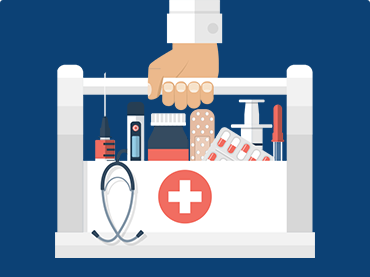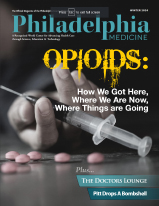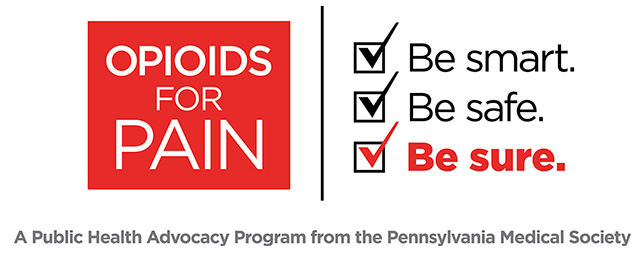The Pennsylvania Department of Health released the following alert on July 4:
Summary:
- There are increasing numbers of COVID-19 cases associated with travel and social gatherings or social settings, including bars, restaurants, and parties.
- Healthcare providers who are evaluating patients for COVID-19 should instruct the patient to isolate while awaiting test results. Patients should be asked to develop a list of people who were in close contact (defined as being within 6 feet for a period of 15 minutes or more depending upon the exposure) with them from the period 48 hours before symptom onset or test date for asymptomatic persons to the time at which the patient isolated.
- The decision to discontinue home isolation for persons with confirmed or suspected COVID-19 should be made in the context of local circumstances. Options include a symptom-based (i.e., time-since-illness-onset and time-since-recovery strategy) or a test-based strategy.
- Healthcare personnel with healthcare related exposures should follow the guidance outlined in PAHAN 510.
The Pennsylvania Department of Health (DOH) is seeing increasing numbers of cases of COVID-19 that are not part of a known outbreak. Specifically, these cases have been associated with travel to other affected parts of the country and social gatherings or social settings (e.g., parties, restaurants, bars). Additionally, the average age of patients with COVID-19 has been decreasing slightly, indicating an increase in the number of younger people being diagnosed with COVID-19.
While serious outcomes are most commonly seen in patients with comorbidities (e.g., obesity, cardiovascular disease, diabetes, chronic respiratory disease, cancer), patients without underlying medical conditions are also at risk for severe outcomes. Studies from China suggest that patients with COVID-19 with no reported underlying medical conditions had an overall case fatality of 0.9%.
DOH is asking that clinicians who are evaluating patients for COVID-19 ask about recent travel (international and within the US), attendance at social gatherings or social settings (e.g., parties, restaurants, bars), and occupation. Clinicians should encourage patients to wear a mask any time they leave their house, in accordance with the Secretary of Health’s Universal Face Covering Order, and to avoid being in close contact with others. Close contact is defined as being within 6 feet of another person for 15 minutes, or being directly exposed to respiratory secretions (e.g., cough or sneeze).
DOH is also asking that clinicians provide the current guidance on isolation to patients being evaluated for COVID-19 to ensure that timely recommendations are provided to reduce spread of disease.
When ordering COVID-19 testing, make sure all fields in the submission form are completed. Race and ethnicity are required. Please report any confirmed cases of SARS-CoV-2, the virus that causes COVID-19, through the DOH electronic disease surveillance system, PA-NEDSS.
Instructions for Patients with Pending or Positive Test Results
- Self-isolate at home.
- If the patient lives with others, self-isolate in a private room and use a private bathroom if possible.
- Wear a mask when entering general living areas and interacting with others.
- Monitor symptoms. Instruct patients to notify their healthcare provider if symptoms worsen. Patients should indicate that they are either waiting for test results or have tested positive for SARS-CoV-2.
- Educate persons who test positive that they will be contacted by public health staff who will interview the patient and provide additional recommendations. Cooperation with public health staff is essential to prevent ongoing transmission.
- Compose a list of people with whom they were in close contact from the period 48 hours before symptom onset or test date for asymptomatic persons to the time at which the patient isolated, regardless if any of the individuals were wearing facial coverings.
- Currently, close contact is defined as being within 6 feet:
- For 15 minutes or more, OR;
- Currently, close contact is defined as being within 6 feet:
-
-
- Being directly exposed to respiratory secretions (e.g., cough or sneeze)
-
- Persons who test positive are considered infectious 48 hours before the onset of symptoms. Persons testing positive but who do not have symptoms are considered infectious 2 days after exposure (if known) or starting 2 days before test date (if exposure is unknown).
- The decision to discontinue home isolation for persons with confirmed or suspected COVID-19 should be made in the context of local circumstances. Options include a symptom-based (i.e., time-since-illness-onset and time-since-recovery strategy) or a test-based strategy and are fully described at https://www.cdc.gov/coronavirus/2019-ncov/hcp/disposition-in-home-patients.html and PAHAN 504
COVID-19 Patients who are Healthcare Personnel
- Patients diagnosed with COVID-19 who are healthcare personnel (HCP), including staff in long term care or other residential facilities, should contact their supervisor and occupational health to report their diagnosis, and isolate at home.
- HCP who are diagnosed with COVID-19 should follow the return to work for healthcare personnel with confirmed or suspected COVID-19 as described in PAHAN 501
- HCP should work with occupational health to determine an appropriate return to work strategy based on the current capacity and facility surge situation.
Instructions for Close Contacts of People Diagnosed with COVID-19
- A close contact is described above.
- Educate close contacts that they will be called by public health or contact tracing staff who will interview the contact and provide additional recommendations. Cooperation with public health staff is essential to prevent ongoing transmission.
- Close contacts of patients diagnosed with COVID-19 should be instructed to self-quarantine for 14 days from the date of their last contact with the patient. For household contacts, this will be 14 days from the date the person with COVID-19 is released from isolation.
- If a close contact develops symptoms during those 14 days, they could be tested for COVID-19, or they may be advised to self-isolate at home.
- Close contacts who are HCP should be instructed to notify occupational health immediately for additional instruction. Close contacts who are HCP with community or household exposures should be excluded from work and self-quarantine for 14 days following the last date of exposure, unless all the following criteria are met in the healthcare facility:
- Exclusion of the exposed HCP would mean there would no longer be enough staff to provide safe patient care.
- Other contingency capacity standards have been exhausted (see CDC strategies).
- The facility has met criteria for crisis capacity standards for staffing as defined in their emergency preparedness plan.
- HCP with healthcare related exposures should follow the guidance outlined in PAHAN 510.
- Close contacts who are critical infrastructure workers should follow the guidance outlined in PAHAN 498.




